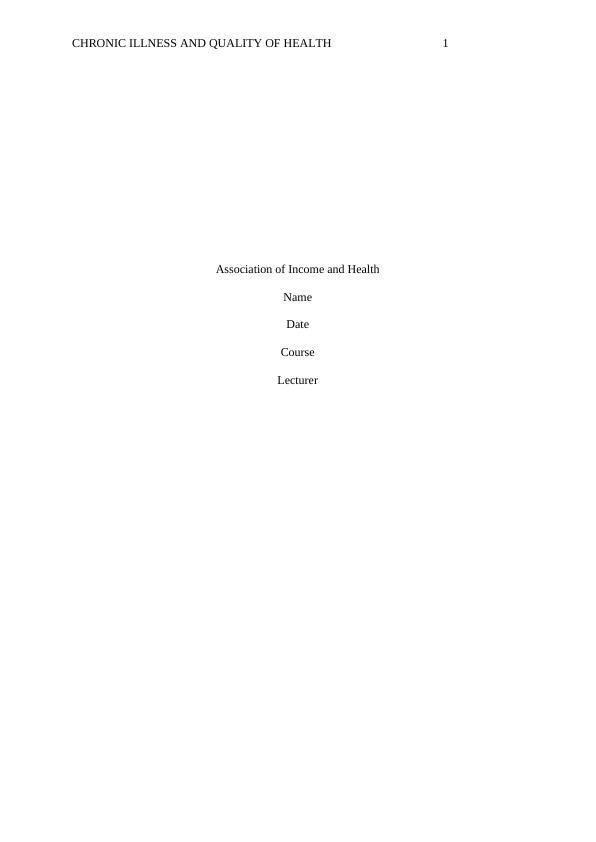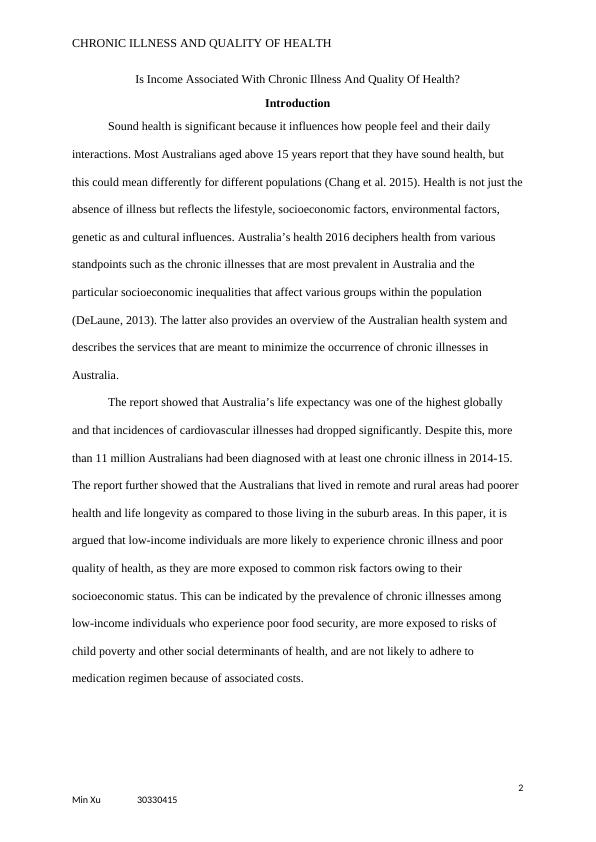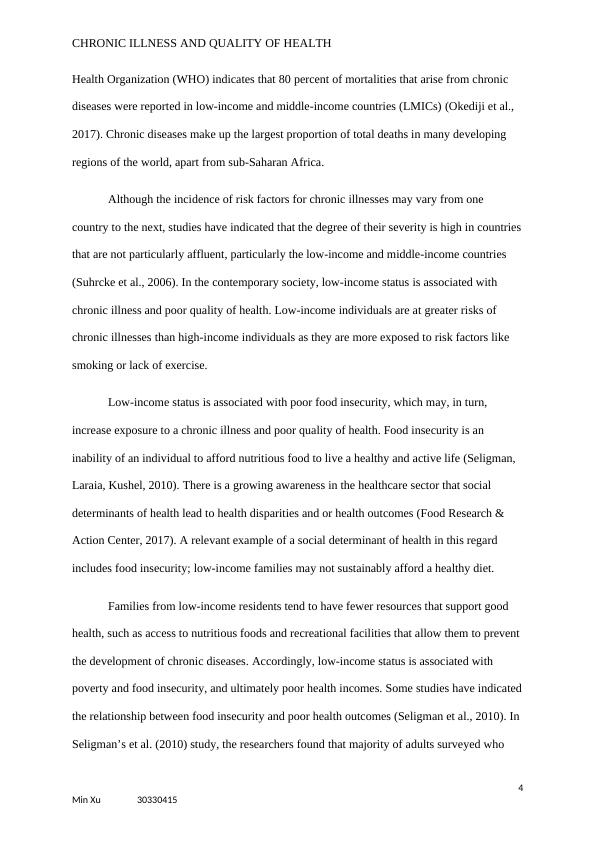Chronic Illness and Quality of Health: Association of Income and Health
Is Income Associated With Chronic Illness And Quality Of Health?
11 Pages3212 Words103 Views
Added on 2023-06-08
About This Document
This article explores the association between income and chronic illness and quality of health. It discusses the prevalence of chronic illnesses among low-income individuals, the impact of food insecurity and childhood poverty, and the challenges of managing chronic illnesses for low-income families.
Chronic Illness and Quality of Health: Association of Income and Health
Is Income Associated With Chronic Illness And Quality Of Health?
Added on 2023-06-08
ShareRelated Documents
End of preview
Want to access all the pages? Upload your documents or become a member.
The Social Determinants of Health in Australia
|7
|1393
|18
Social Determinants of Health
|7
|1220
|297
The Burden of Heart Disease in Low Socioeconomic Australians
|10
|2020
|170
Social determinants of asthma in Australian children
|6
|1230
|497
Social determinants of Indigenous Health | Study
|7
|1675
|22
Community Nursing Practice - Assignment
|9
|2517
|178




